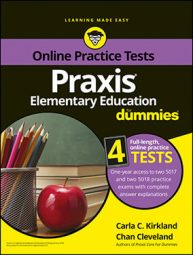When readers are emerging, or just developing, they may see letters and punctuation merely as shapes. These beginning readers need to learn about print concepts like the following:
- A certain shape stands for a letter.
- Printed letters go together to make words.
- Printed words go together to make sentences.
- Words have spaces between them.
- Text is read from left to right and top to bottom.
- Texts have a front, back, title, and author.
Practice question
- Answer by choosing all the correct responses. A student writes the following and reads aloud, "It was very cold and dark in the cave, but I could see a lot of bats." It wz vr kld dk n cv bt I kd c lt v btz Which skills is this student demonstrating the ability to perform? Select all that apply. A. Use spaces between words. B. Partially include medial vowels. C. Partially spell consonant blends. D. Use correct directionality of print.
Answer and explanation
- The correct answers are Choices (A, C, and D). This question requires an understanding of the roles of print awareness, phonics, and word recognition in learning reading fundamentals. Spaces between words and directionality of print (writing from left to right) are print concepts this student is demonstrating. The student's writing also demonstrates mastery of consonant blends, which are groups of consonants that appear together but are pronounced more or less individually. Choice (B) is incorrect because the student is not using vowels between consonants.

